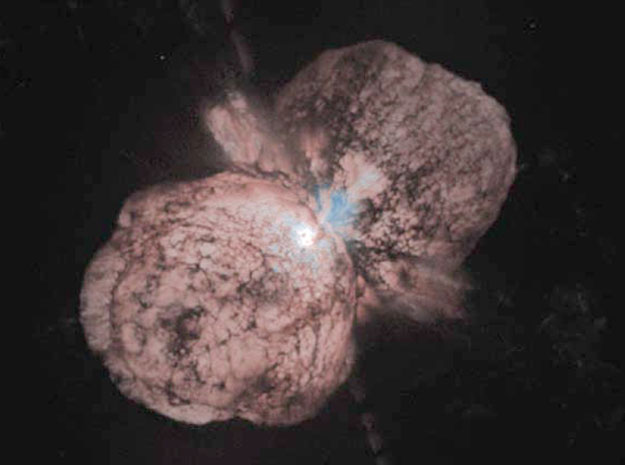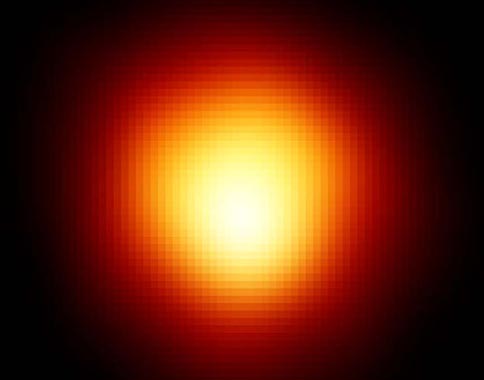Reply
Mon 10 Jan, 2005 04:24 pm
SAN DIEGO (Reuters) - A trio of supergiants -- red, cool, bright stars at the end of their lives -- may be the biggest stars ever identified, astronomers reported on Monday.
All three have diameters of more than 1 billion miles, or 1,500 times the sun's girth. If they were in the same location as the sun, they would completely engulf Earth and their outer layers would extend to a point between the orbits of Jupiter and Saturn.
It's mind-boggling to think stuff like that is out there. Oh, that's right, no one cares. They're all too busy staring at the boob tube. Ah well, some of us can dig it.
Wow... I'm assuming that these stars are quite far from our solar system, but exactly how far?
I thought squinney had posted some of my private pictures...
smog wrote:Wow... I'm assuming that these stars are quite far from our solar system, but exactly how far?
The three big supergiant stars are: KW Sagitarii, which is 9,800 light-years from Earth; V354 Cephei, at 9,000 light-years away; and KY Cygni, 5,200 light-years away. A light-year is about 6 trillion miles, the distance light travels in a year.
so what you're saying is that a summer vacation visit isnt such a good idea?
Bi-Polar Bear wrote:I thought squinney had posted some of my private pictures...
Wrong post. I think
this is the one of which you are thinking.

Seed wrote:so what you're saying is that a summer vacation visit isnt such a good idea?
Only if you have SPF 5,600 sunblock. (These stars are around 5,600 degrees Fahrenheit.)
They're a great deal larger than most red giants, but how do they compare in mass? Perhaps their density is low so that the mass is not greater by as large a factor.
Brandon9000 wrote:They're a great deal larger than most red giants, but how do they compare in mass? Perhaps their density is low so that the mass is not greater by as large a factor.
25 solar masses. Big and shiny, but with little substance.
they arent close to each other im taking it...
Seed wrote:they arent close to each other im taking it...
They're all in our Milky Way Galaxy, two are close to each other (relatively speaking) and the other not so much.
so im guessing they wont be collasping into each other or anything like that...
RfromP wrote:Brandon9000 wrote:They're a great deal larger than most red giants, but how do they compare in mass? Perhaps their density is low so that the mass is not greater by as large a factor.
25 solar masses. Big and shiny, but with little substance.
I believe
Eta Carinae is one of the most massive known. And it's quite unstable.

It sounds like the new stars are even larger than Betelgeuse, which is only listed as "over 1000 times the diameter of our Sun".
Many of these larger stars are so bloated that their exact outer edge is hard to discern, and can be variable with the ebb and flow of plasma edge.
Betelgeuse has a bright spot which is actually a bit off center, and I think I read that it moves around.

Seed wrote:so im guessing they wont be collasping into each other or anything like that...
We will never see it but you never know what could happen millions of years from now.
well that is the truth... though what a show that would be huh?